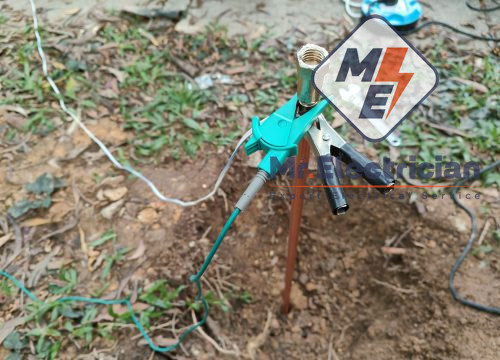Earthing Solutions
Earthing serves two primary functions: ensuring the safety of people and electrical appliances. It provides a safe path for electrical current to flow to the ground during system faults or overloads, thereby reducing the risk of fire, electrocution, and equipment damage.
Additionally, effective earthing stabilizes system voltage, ensuring it remains within safe limits. This is critical for systems containing sensitive equipment susceptible to damage from voltage fluctuations.
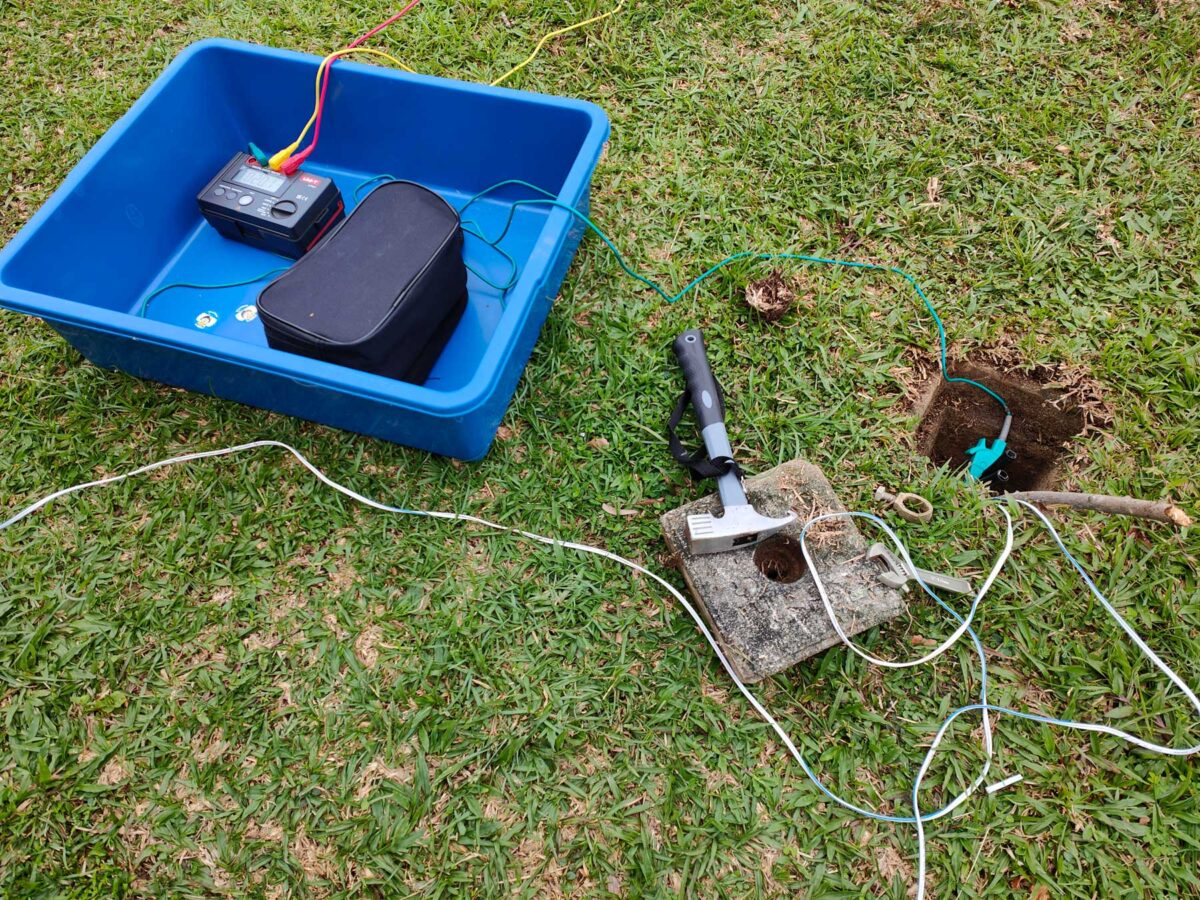
Why Is Earthing Necessary?
Earthing involves connecting an earth electrode to the metal chassis with a wire conductor, ensuring that any electric current from insulation faults in electrical devices is safely directed into the ground, thus minimizing risks to people.
Without proper earthing, people can be exposed to deadly electric currents. Earthing also safely directs small leakage currents away, and when connected to an automatic shut-off, it quickly cuts power to the electrical system.
Proper earthing ensures safety for individuals and safeguards installations and property from potential damage caused by fault currents or lightning strikes. It’s essential to always incorporate earthing with a cut-off system.
For example, if there is faulty insulation on the load, the fault current is directed to earth through the protective conductor (PE). Depending on its magnitude, this fault current can trigger the residual current device (RCD), resulting in the installation being shut off.
What Are The Earthing Rules In Malaysia
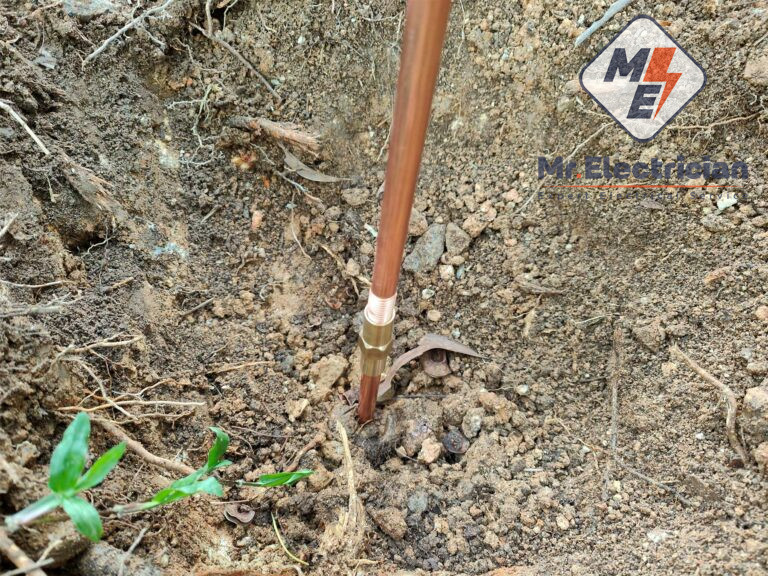
Materials Required For Earth Rod Installation
Earth Rod: Essential for grounding, providing a direct connection to the earth. The copperbonded steel-core rod is extremely popular due to its blend of durability, resistance to corrosion, and relatively low price. There are many copperbonded rod brands available in Malaysia, with prices ranging from RM 10 to RM 150. We normally use the Taipoly brand, as it has been on the market for many years. Their product quality is excellent, and we have installed this brand for thousands of our customers.
Earth Wire: The main goal of grounding electrical or electronic equipment is to safeguard humans from electrical shock. The earth wire or plug is generally larger than the live wire due to several reasons: During a short circuit, the amount of current generated is very high. Therefore, the size of the earthing cable needs to be larger to safely withstand this current from the line cable. In a three-pin plug, the earth pin is typically longer than the phase and neutral pins. This design ensures that the earth connection is established before the power connections when the equipment is plugged in. In case of any electrical fault, electrical leakage will exit through the earth wire to the ground. This ensures safety by directing excess current away from the equipment and preventing potential hazards such as electric shock or fire. It’s our common practice to use 16mm mega cable for the earth wire connected to the earthing rod.
Earth Chamber: In Malaysia, it’s common to use concrete or PVC earth pits or inspection chambers to house the earth rod, ensuring protection from environmental elements and facilitating maintenance and inspections.
Earth Rod Clamp: It’s important to securely fasten the earth wire to the earth rod, ensuring a tight and reliable connection. We normally use NMC or CS brands for earth rod clamps, known for their thick and solid clamp material. We use two clamps for every earth chamber: one to tighten the whole earth wire and another to secure the earth wire copper part to the rod securely.
Earth Rod Socket or Coupling: After installing the first rod into the ground, we use a socket or coupling to securely join the second rod before driving it into the ground.
Jackhammer: The installation of the first earth rod is typically straightforward with the use of Jackhammer. Installing the second, third, and subsequent earth rods can become more difficult because of obstacles such as tree roots or rocks in the soil. These can complicate the installation process, making it necessary to maneuver carefully with the jackhammer to achieve the proper depth for effective grounding.
Shovel or Post-Hole Digger: Essential tools for excavating the hole where the rod and earth chamber will be installed.
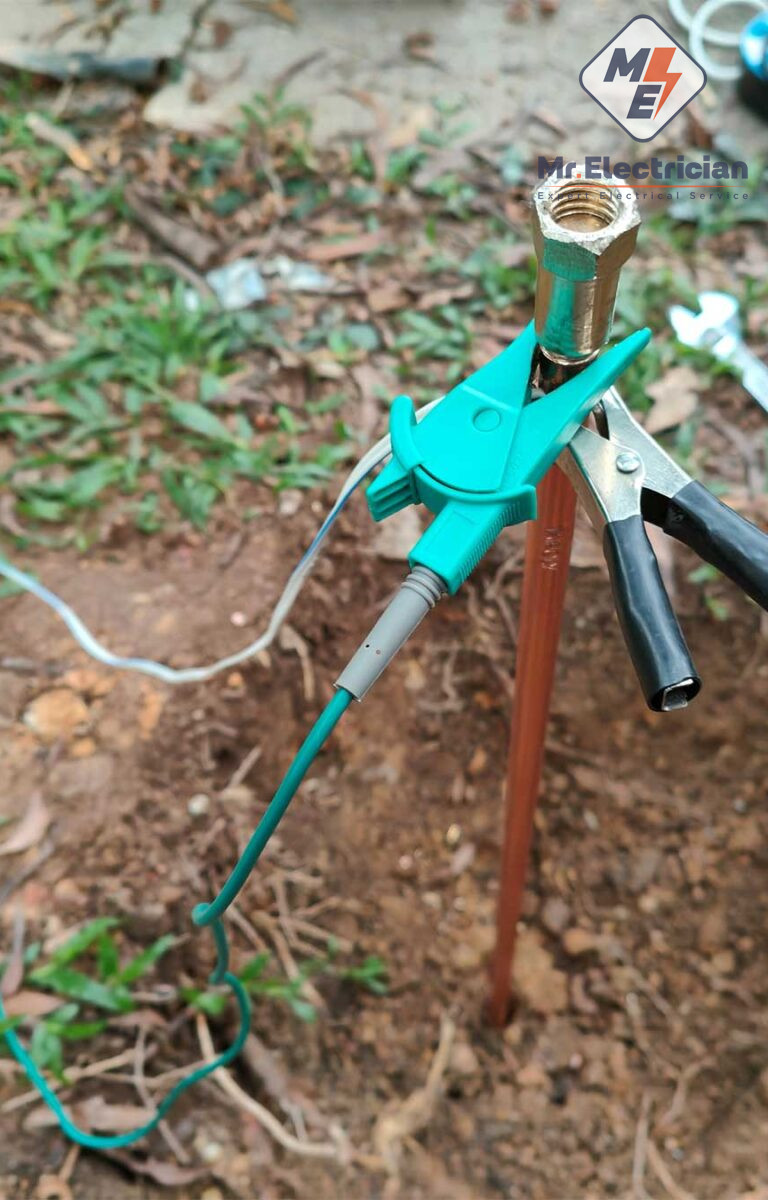
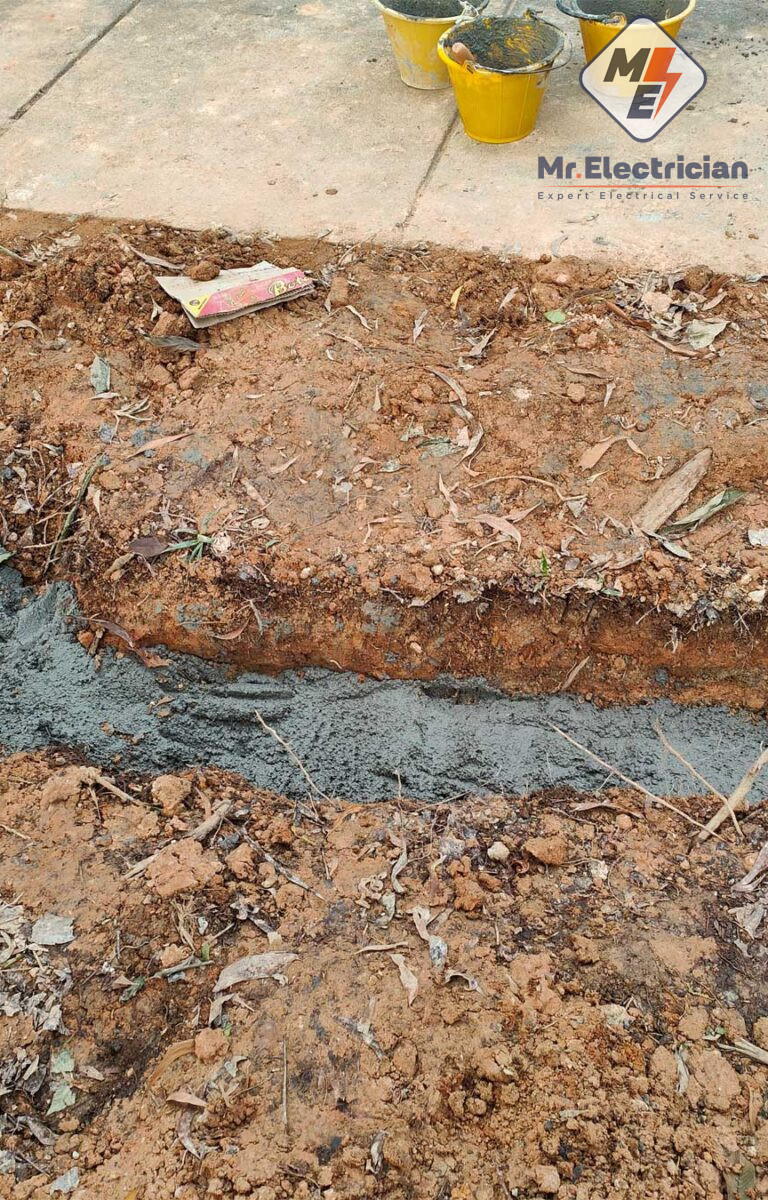
On-Site Earth Rod Installation
Step 1: Identify the correct location based on your earthing design. Ensure it is not near rocky or root-filled areas Try to keep the location 1 to 2 meters away from the external house wall. This will help ensure the earth rod misses the foundation footing and is easier to run.
Step 2: Dig a hole with a width, depth, and length of 1 foot, or according to the size of your earth chamber. Ensure that after placing your earth chamber, the earth chamber cover is level with the ground.
Step 3: Position the earth rod at the center of the hole, then use a jackhammer to drive it into the ground. This first earth rod should go in smoothly.
Step 4: Use a coupler (socket) to extend the rod to the required length. Drive the rod as deep as possible into the ground. Ideally, use three or more rods for better earthing.
Step 5: After driving in three rods, we use an earth meter to measure the resistance. If it is below 10 ohms, we meet the standard. The earthing system in Malaysia is designed to ensure earth resistance remains at a safe level, typically below 10 ohms. If the reading is above 10 ohms, then we continue driving in more rods until we achieve a satisfactory resistance level. If you are unable to drive in more rods at the same hole, you can dig another hole for a second earth chamber. Use jumper wires to connect both the first earth chamber you dug earlier and the second earth chamber.
Step 6: Place the earth chamber over the earth rod to protect it from external factors and for future inspections. We usually create a concrete mixture of cement and stones to form a solid foundation around the earth chamber, ensuring it remains securely positioned.
Step 7: Connect the earth wire to the earth rod using an earth clamp.
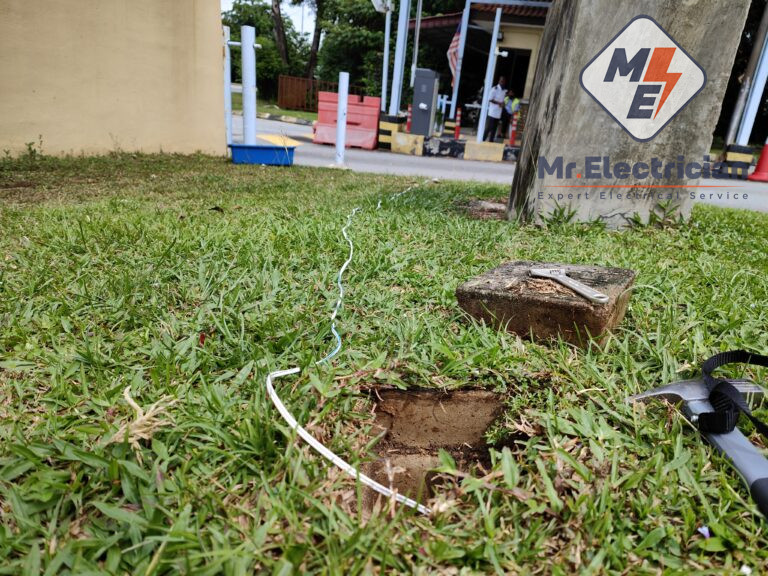
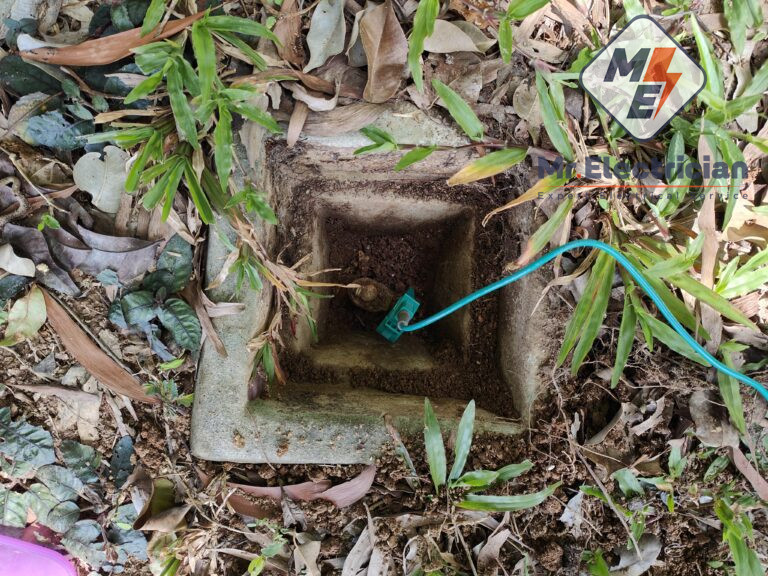
Fix Your Earthing Issues Today
Is your equipment frequently tripping? Do you ever get shocked when you touch a home appliance? If so, it could indicate that your house wiring lacks proper grounding. Living in a home that’s improperly grounded, or not grounded at all, can pose serious risks such as fire and electrical shock. These dangers are particularly heightened in areas like the kitchen and bathroom where water is present. Proper grounding is essential for the safety of your home and family. It protects your electrical appliances, prevents damage to your systems, and ensures that your home is up to code. If you’re unsure about the state of your home’s electrical grounding or if you’re experiencing issues with your electrical system, don’t hesitate to get it checked. A simple inspection can save you from bigger, more costly problems down the road.
For more information on proper home earthing or to schedule a whole-house inspection, please contact us at 012–870 2699.
Our Services
We Take Care All Type of Electrical Problems
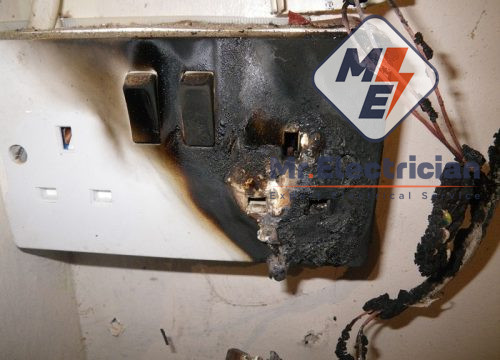
Electrical Repairs
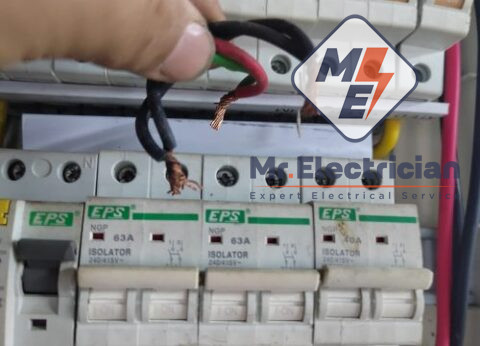
Electrical Safety Inspection
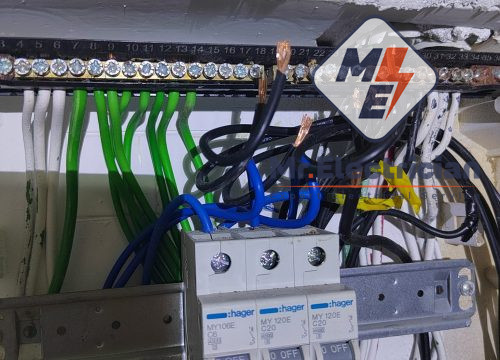
Electrical Troubleshooting
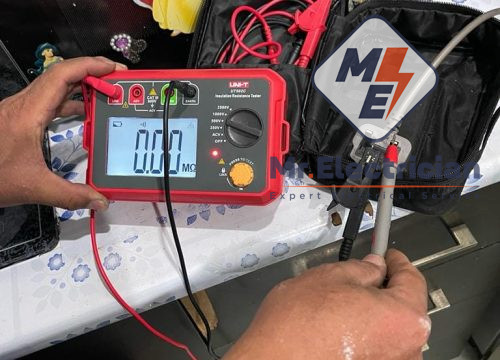
Short Circuit Repair
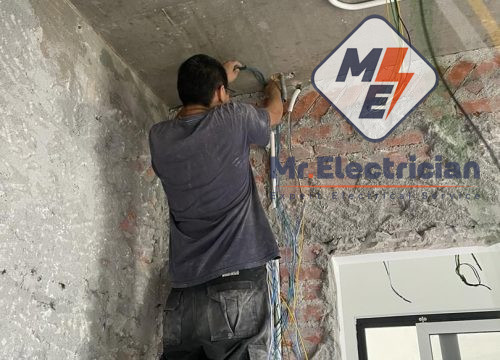
Electrical Wiring
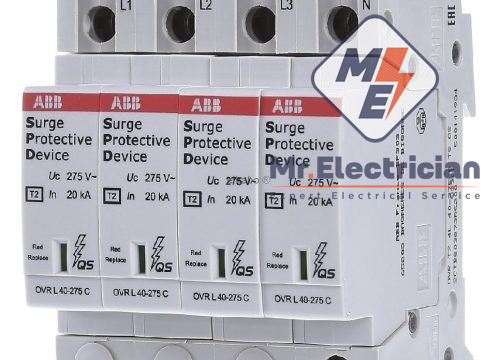
Surge Protection
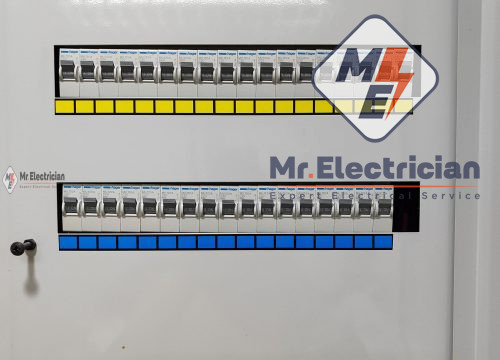
Electrical DB Upgrade
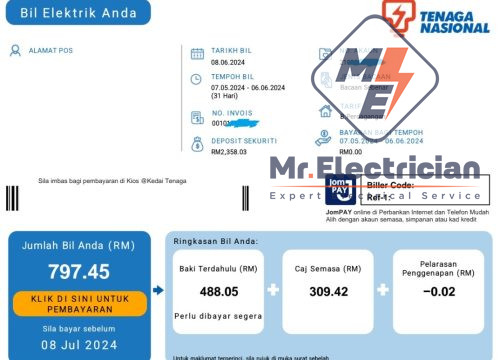
Electricity Saving
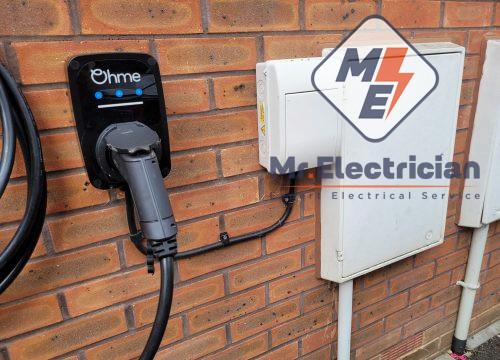
EV Charger Installation
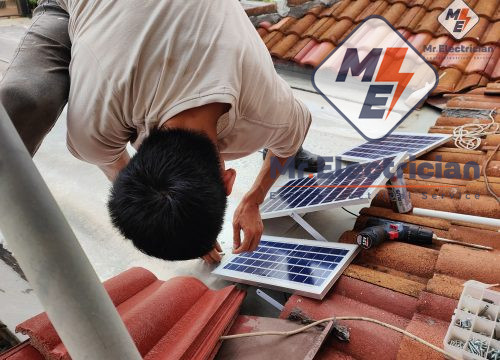
Solar Light Installation
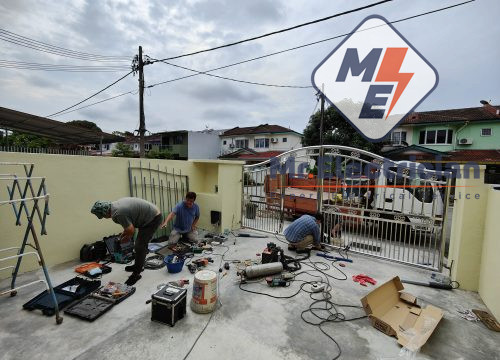
Autogate Installation
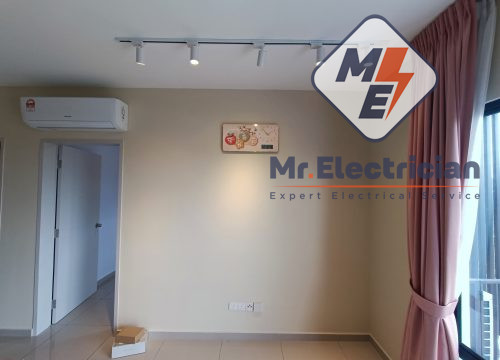
Lighting Installation
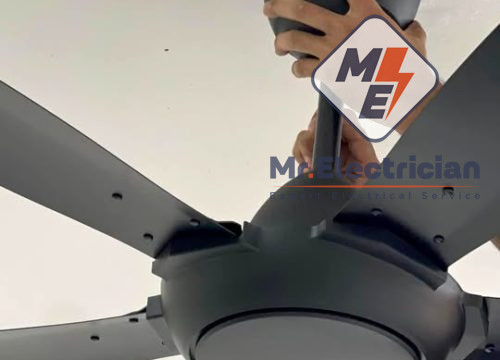
Ceiling Fan Installation
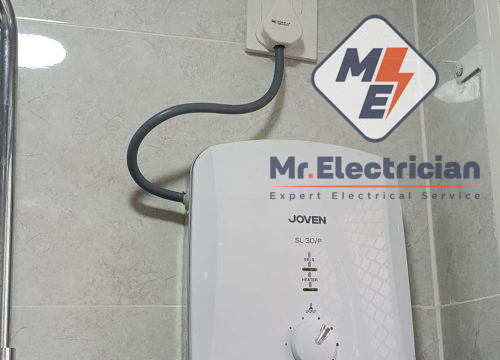
Water Heater Installation
